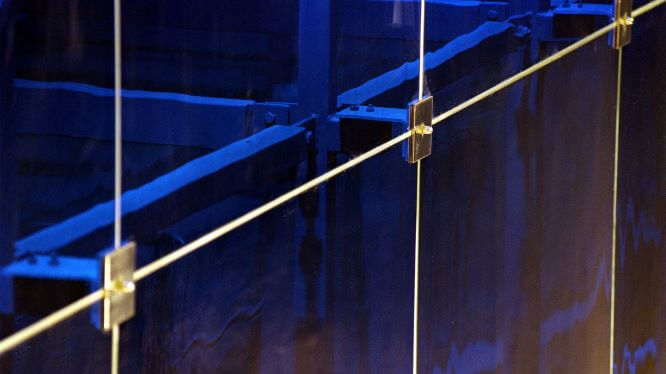Researchers believe the laser could transform the manufacturing sector and have uses in the aerospace, defence and optical technology fields.
Ultrafast Laser That Welds Glass And Metal Together Described As ‘Breakthrough’
Researchers believe the laser could transform the manufacturing sector and have uses in the aerospace, defence and optical technology fields.

Scientists have developed a method using an ultrafast laser system to weld glass and metal together, which is being described as a “breakthrough” for manufacturing.
The Heriot-Watt University technology provides very short pulses of infrared light in tracks along the materials to fuse them together.
Researchers believe the new process could transform the manufacturing sector and have uses in the aerospace, defence, optical technology and even healthcare fields.
Professor Duncan Hand, director of the EPSRC Centre for Innovative Manufacturing in Laser-based Production Processes, said: “Traditionally, it has been very difficult to weld together dissimilar materials like glass and metal due to their different thermal properties.
“The high temperatures and highly different thermal expansions involved cause the glass to shatter.
“Being able to weld glass and metals together will be a huge step forward in manufacturing and design flexibility.
“At the moment, equipment and products that involve glass and metal are often held together by adhesives, which are messy to apply and parts can gradually creep, or move.
“Outgassing is also an issue – organic chemicals from the adhesive can be gradually released and can lead to reduced product lifetime.”
Various optical materials such as quartz, borosilicate glass and sapphire were all successfully welded to metals like aluminium, titanium and stainless steel.
The pulses of infrared light last only a few picoseconds, which is to a second what a second is compared to 30,000 years.
The parts to be welded are placed in close contact and the laser is focused through the optical material to provide a very small and highly intense spot.
This creates a microplasma – described as being like a tiny ball of lightning inside the material – surrounded by a highly-confined melt region.
Scientists tested the welds at -50C to 90C and they remained intact, so it is believed they are robust enough to cope with extreme conditions.
Conor Riordan, Press Association Scotland.
Thanks for signing up to Minutehack alerts.
Brilliant editorials heading your way soon.
Okay, Thanks!

